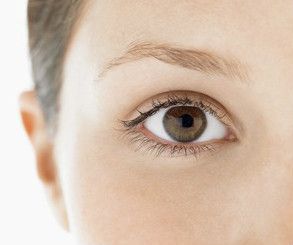Blepharoplasty - Eyelid Surgery
What does a blepharoplasty treat?
 Blepharoplasty treats disgraces observed on the eyelids. We distinguish the upper eyelid which is mobile and closes the eyes, from the lower eyelid, the one under the eyes and very little mobile. Upper blepharoplasty treats dermatochalasis, excess skin and fat forming a cap that weighs down the eyelid. Lower blepharoplasty is indicated to treat bags under the eyes and tighten sometimes wrinkled skin.
Blepharoplasty treats disgraces observed on the eyelids. We distinguish the upper eyelid which is mobile and closes the eyes, from the lower eyelid, the one under the eyes and very little mobile. Upper blepharoplasty treats dermatochalasis, excess skin and fat forming a cap that weighs down the eyelid. Lower blepharoplasty is indicated to treat bags under the eyes and tighten sometimes wrinkled skin.
At what age can a blepharoplasty be considered?
The requests are sometimes early, from the age of 25, there can be fatty hernias of the unsightly lower eyelids giving a permanently tired look (bags under the eyes). Their treatment is only surgical. Apart from this case of the very young subject, progressive skin and muscle relaxation is the rule for everyone. Blepharoplasty can be performed at any age, representing a rejuvenating operation with a spectacular “healthy glow” effect.
What is blepharoplasty, where are the scars?
The objective of blepharoplasty is to restore tone to the eyes by removing puffiness and hernias fat and removing excess skin and muscle. The procedure, which lasts about an hour and a half, leaves no or very little noticeable scar in the medium term. The skin incisions are made in the natural folds of the upper eyelids overflowing towards the tail of the eyebrow or at the level of the eyelashes of the lower eyelid extended over a few millimeters in a crow's feet wrinkle. They will become almost invisible in a few months. The trans-conjunctival route (inside the lower eyelid) allows bags under the eyes to be removed without skin scarring. It is the aesthetic intervention par excellence, it is practiced systematically in the young subject and very frequently afterwards, because it completely preserves the initial shape of the eye preventing any complication such as ectropion or round eye.
How is it going?
Blepharoplasty takes place under pure local anesthesia or potentiated by sedation, it is practiced in outpatient hospitalization. An ice blindfold is placed for a few minutes over the closed eyes. The vision is initially disturbed by disorder of oculomotor secondary to anesthesia. It goes back to normal spontaneously in a few hours.
What are the postoperative consequences of blepharoplasty?
Odema (swelling) accompanied by bruises (bruises) set in crescendo in 48 hours for disappear gradually over 10 days. A sensation of tension in the eyelids persists for a few days and complete closure of the eyes can be troublesome for 48 hours. Total rest is necessary for the first few days. It is possible to resume normal activity about eight days after the operation. Driving is prohibited for 48 hours. The threads are removed around the 5th day. The appearance of a hematoma, characterized by an exuberant and very tense swelling of an eyelid, associated with intolerable pain, or a disturbance of vision, must lead to an emergency call from the practitioner whatever the time.
Conclusion of blepharoplasty
Blepharoplasty is a cosmetic surgery procedure par excellence, its “healthy glow” effect is guaranteed. The scars are almost imperceptible or even absent. It can be practiced from the age of 25 if you have early fatty pockets. During a facelift, especially primary, it will be systematically considered and most often carried out. A Botox injection of the eyes, performed separately, will optimize the result if eyebrow ptosis is observed.